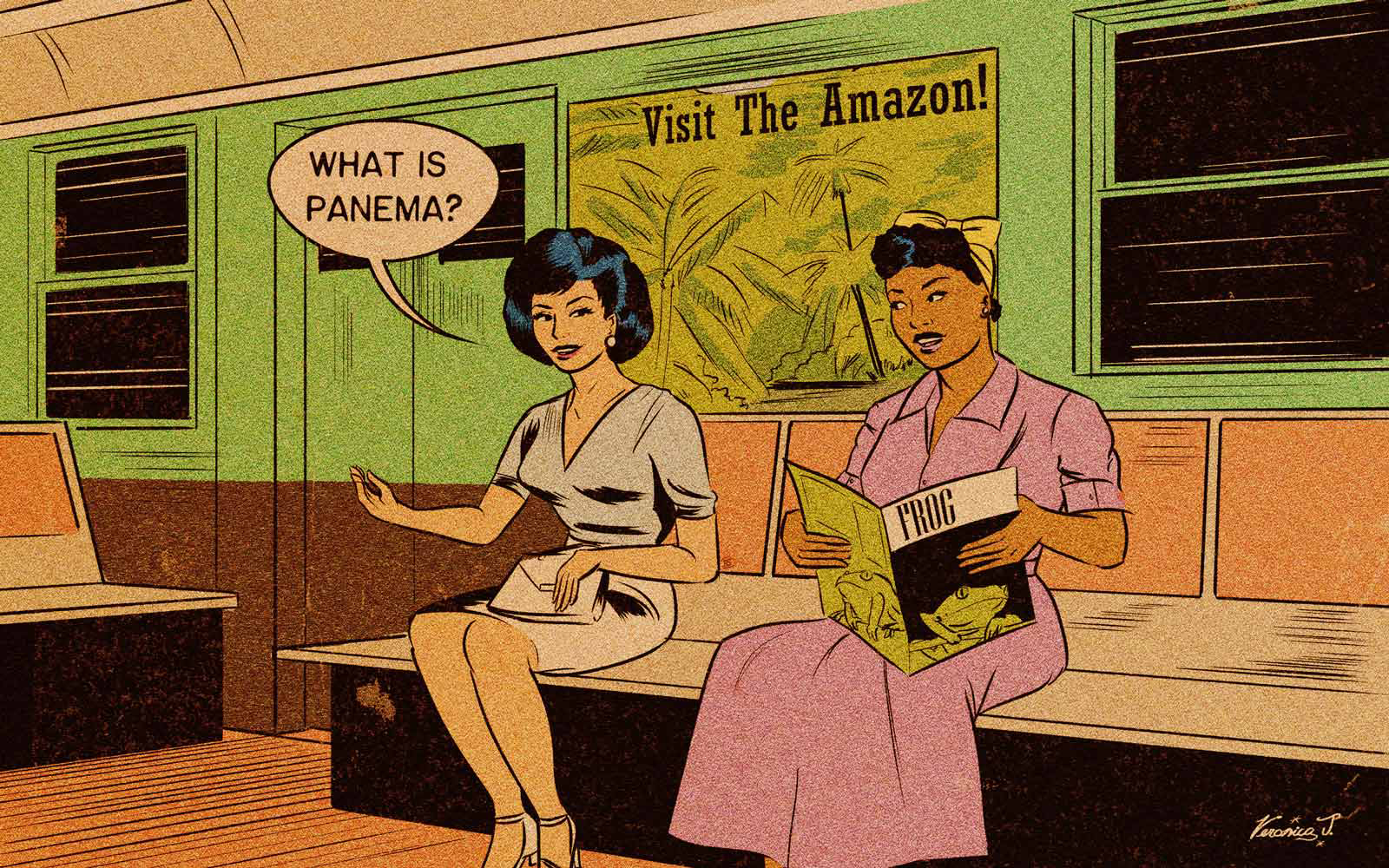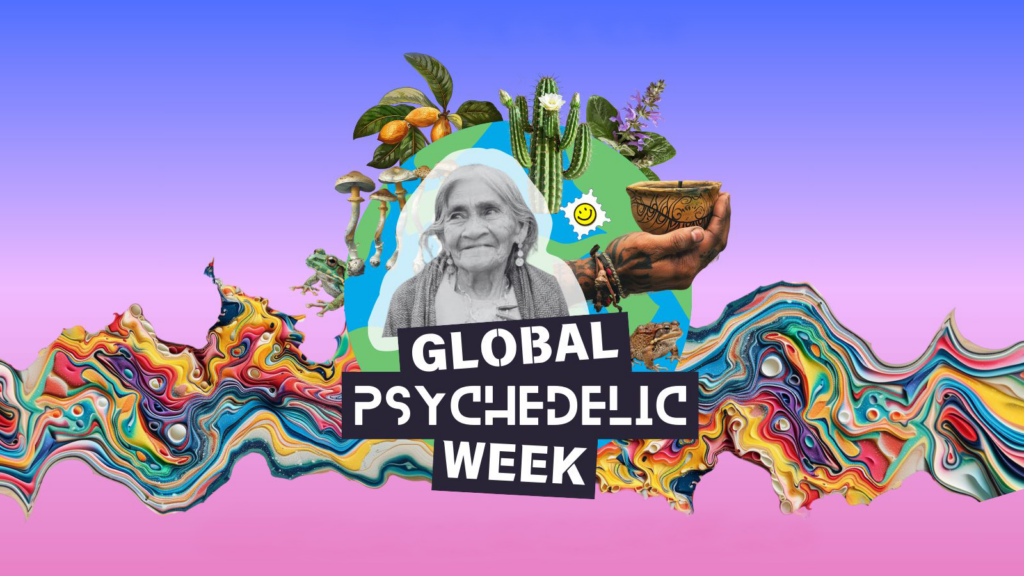The notion of a ‘second silent pandemic’ is already sweeping the nation as a growing mental health crisis looms large in the aftermath of COVID-19. As a result, underground healing rituals showing strength in psychoactive solutions are steadily on the rise.
One such ceremony is that of Kambo. Containing a plethora of bioactive peptides, the venomous secretion from the Giant Leaf Monkey Frog is being applied via superficial heat-induced blisters to the skin, in a process often referred to as a ‘vaccination’.
In the rich historical context of this integrative medicine, this process is in part employed in order to disperse what indigenous users have been recorded to refer to as ‘panema’ – a negative entity believed to manifest in physical sickness, mental depression, and bad luck hunting (1).
The translation of this view under a holistic Western lens may equate to the dispersal of both physical infections through stimulation of the immune response, and psychological changes produced by the induction of the parasympathetic state alongside symbolic healing involving the core transpersonal principles of ecopsychology (2).
So, could this controversial cure hold equal transformative potential within the realms of Western approaches to mental health management, through its injection of psychospiritual and ecotherapeutic paradigms?

Ceremonial Cleansing Cures
Kambo’s bioactive brew predominantly affects the gastrointestinal, cardiovascular and nervous systems. Although not typically considered ‘psychoactive’, it does contain dermorphin, caerulein, and dystrophin, which stimulate different opioid receptors and may, therefore, alter consciousness, especially with regards to pain.
A controlled setting for administration is important, as the temporary effects including systemic swelling, sweating and vomiting can be quite intense depending on dose, and in rare cases have also led to hospital admissions.
However, in ecopsychology, Kambo’s purge has also been shown to produce transformative changes in self-experience and personal meaning that have a beneficial impact on mental health and wellbeing.
This includes experiences of ego dissolution and oneness by entering a new state of consciousness that creates feelings of interconnectedness and being a part of a larger whole. Such a ‘shamanistic’ occurrence has become synonymous with ‘magical’ in its effects.
Just as the placebo effect provokes endogenous healing responses, Kambo activates both the parasympathetic and sympathetic nervous systems, creating profound shifts in activity and balance within the autonomic nervous system (ANS).
These shifts are found in many ritualistic treatment processes involving altered states of consciousness and have been shown to be particularly effective in relieving the symptoms of stress (chronic overstimulation of the sympathetic system).
In the modern era, it has become a rare feat to maintain a parasympathetic dominant state which allows for an intense internal focus of attention. While practices such as yoga and meditation can achieve a similar result, in many Western rituals requiring substances, Kambo is often combined with ayahuasca or other ‘teacher plants’ including iboga or peyote.
As an emerging medicine, there are no official clinical trials to date, however, there are anecdotal case studies of Kambo’s ability to successfully treat a diverse array of conditions including anxiety, depression, PTSD, chronic fatigue, chronic pain, recurrent infections and even addictions.
While the rich pharmacology of Kambo provides an explanation for its biological results, in the treatment of the psyche a secondary symbolic healing process is seen to take place.

Universal Mechanisms of Healing
Researcher James Dow describes this as a universal and innate process in which an aligned symbolism instigates changes in both mind and body – challenging attachments, emotions, and beliefs (3). Dow proposed that these universal mechanisms of symbolic healing involved:
1. The establishment of a generalized mythic world, a set of shared explanations regarding the nature of the problem (for Kambo – belief in the power of nature and the medicine of the frog to forcefully purge negative influences)
2. The persuasion of the patient to particularize his or her problems within that mythic world (a seeker’s traditional value orientation for connection with the spiritual and natural healing dimensions that such medicine might provide)
3. The ritual processes attaching the patient’s emotions to the mythic world symbols (the patient’s beliefs and emotions attached to the physical processes accompanying the medicine – with the purgative symptoms being perceived as direct evidence of the holistic cleansing power of the ritual)
4. And the ritual manipulation of symbols and self-dynamics to produce emotional transformations (the emotional, archetypal, and metaphorical shifts provided by the process – for example, as a disengagement with problematic aspects of one’s personal psychology and self)
The symbolic healing of the purge is not new. Just prior to the scientific development of medicine in the West, many diseases were still treated with calomel (mercurous chloride) which also generated symptoms of purging (4).
However, like Kambo, mercurous chloride also triggers a plethora of physiological responses, which provide additional vehicles for holistic change at the cellular and psychological levels.
For example, the ‘Kambo afterglow’ may in large part be thanks to the Sauvagine peptide, which has potent vasodilatory effects that might enhance the penetration of dermorphin and other neuro-active peptides into the central nervous system. This is believed to contribute to the euphoric feelings after a session (5).
The Power of the Purge or Pill?
Through Brazil, Kambo has journeyed from its indigenous ritualistic hunting roots in the Amazon to a neo-shamanic symbolic and transpersonal healing ceremony exported across borders.
In its urban context, it provides a portal into physiological responses and symbols of nature that stimulate mechanisms for multiple levels of therapeutic and transpersonal growth.
Transpersonal Psychology and Healing
In transpersonal psychology (where evidence includes the phenomenological and is not limited to clinical trials), this psychological healing is evidenced by the enhancement of human wellbeing through the experience of elements of the psyche as deriving from relationships with ecological dimensions and nature (6).
As other plant medicines such as psilocybin demonstrate, some transpersonal healing is achieved by temporarily shifting consciousness beyond the limits of personal identity (ego construction). The influence of this produces a personal metamorphosis through a rebalancing at physiological, emotional, psychological, and spiritual (existential) levels.
Symbolism and Psychological Impact
It is also the ‘purification by ordeal’ experience, combined with the participant’s expectations that contributes to successful treatment psychologically. For example, the belief that such effects are a response to an internal body scan conducted by the spirit of the frog, together with the emergence of a ‘frog face’ from facial edema, provides further symbolic support for the impact of the ritual (2).
This is even more potent when combined with the powerful pharmacological properties of the peptides affecting the ANS, endocrine and immune systems via their influence on the hypothalamic-pituitary and adrenal gland axes.
Furthermore, this cocktail of peptides may well work together in synergy, instigating interactions at the receptor level, level of plasma kinetics and possessing emergent properties into the realms of the existential.
This can leave the participant feeling reborn, rejuvenated, and cleansed in a way that integrates the physiological, emotional, and psychological elements of the whole patient. The placebo and nocebo effects already demonstrate the power of the mind and beliefs to affect positive or negative changes within the body.
Holistic Systems Science and Kambo
This is something that is still difficult to achieve using a reductionist science that focuses solely on the power of the pill. A holistic systems science includes a neurophenomenological perspective in which physiological changes produce effects that produce experiences.
A metaphoric logic of transformation is based on effects that are provoked physiologically and interpreted culturally. These processes of myth, archetype, and metaphor represent the social, bodily, and psychological domains, respectively (7).
In this sense, Kambo treatment ideologies illustrate the intersection of transpersonal psychology and ecopsychology, whereby humans and nature are part of a transpersonal whole, similar to the Gaia hypothesis proposed by James Lovelock (8).
The Kambo user engages a psychology of transformation with a self-empowered intention involving seeking personal change and a sense of optimal wellbeing through the integration of nature’s potentials.
This addresses what Davis and Canty (9) consider ‘a core psychological crisis and collective trauma plaguing modern humans, whose technology and machines have produced a separation of personal identity, self and soul from the natural world.’ The frog is just one such vehicle for physically and symbolically providing a reconnection between human and non-human halves.
This sets the scene for Kambo to function as a powerful symbolic healing ritual – the increasing popularity of which may be seen as a result of the postmodern search for spiritual and ecological remedies and ecotherapies that have profound effects on the physiological, emotional, and psychosocial levels.

Modern Mental Health and Ancient Wisdom
When it comes to modern methods for managing mental health, integrative solutions already champion the benefits of a truly personalized, bio-psycho-social approach:
As we look forward toward a horizon where science and technology have made us increasingly smart, perhaps there is equal weighting to be found in glancing backward at the ancient wisdom traditions of our long-forgotten roots.
References
1. Bartels, E (November 2019) Dermaseptins, multifunctional antimicrobial peptides: a review of their pharmacology, effectivity, mechanism of action, and possible future directions. Retrieved from: https://www.frontiersin.org/articles/10.3389/fphar.2019.01421/full
2. Winkelman, M (December 2019) Vaccination with Kambo against bad influences: process of symbolic healing and ecotherapy. Retrieved from: https://www.researchgate.net/publication/337944160_Vaccination_with_Kambo_Against_Bad_Influences_Processes_of_Symbolic_Healing_and_Ecotherapy
3. Dow, J (1986) Universal Aspects of Symbolic Healing: A theoretical synthesis American Anthropologist 88(1), 56-69. Retrieved from: https://psycnet.apa.org/record/1987-07850-001
4. Moerman, D et al (1979) Anthropology of Symbolic Healing Current Anthropology 20(1), 59-80 Retrieved from: https://www.journals.uchicago.edu/doi/abs/10.1086/202203
5. Erspamer, V et al (1993) Pharmacological Studies of Sapo from the frog Phyllomedusa bicolor skin: A drug used by the Peruvian Matses Indians in Shamanic hunting practices. Toxicon 31 (9) Retrieved from: https://pubmed.ncbi.nlm.nih.gov/8266343/
6. Hartelius, G et al (2013) A brand from the burning: Defining transpersonal psychology The Wiley-Blackwell handbook of transpersonal psychology (pp.3-22)
7. Kirmayer, L (2004) The Cultural Diversity of Healing: Meaning, Metaphor and Mechanism British Medical Bulletin. Retrieved from: https://pubmed.ncbi.nlm.nih.gov/15226195/
8. Lovelock, J (1979) Gaia: A New Look At Life On Earth Oxford University Press: UK
9. Davis, J, Canty, J (2013) Ecopsychology and Transpersonal Psychology The Wiley-Blackwell handbook of transpersonal psychology (pp.597 – 611)














